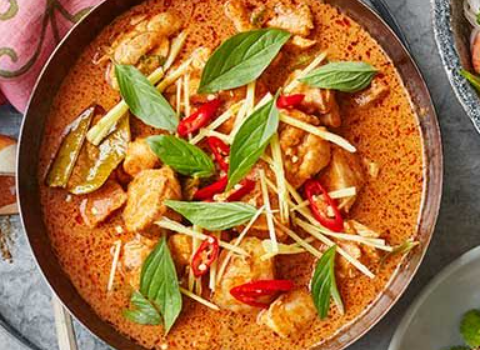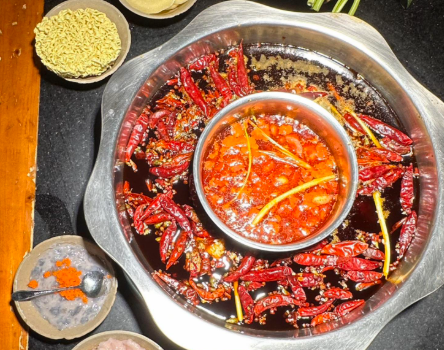
During our travels in China, we discovered an incredible variety of street food that quickly became the highlight of our culinary adventures. Though we visited during the winter months, when the chilly temperatures made street food even more appealing, we were pleasantly surprised by the quality and variety of options available. Here are our top 10 Chinese street food favorites, each offering a unique taste of local culture and flavor.
1. Chinese Crepes (Jianbing, 煎饼)
Jianbing is a beloved street food, especially in the mornings, and offers the perfect combination of flavors and textures. A thin fried egg base is layered with scallions, chili sauce, lettuce, and crispy fried dough, all wrapped up to create a delicious handheld breakfast. Jianbing is easy to find at street corners, where vendors quickly prepare these savory crepes for the hungry crowds. A second serving with extra pickled long beans is a must for added flavor.
2. Chinese Hamburger (Rou Jia Mo, 肉夹馍)
Rou Jia Mo, often called the Chinese hamburger, features stewed meat, typically pork, stuffed inside a soft, round bread. The meat is spiced with a mixture of chili, cumin, and Sichuan pepper for a flavorful punch. While pork is the most common filling, in Muslim-majority areas, you can also find versions with mutton or beef. This delicious street food originates from Xi’an but has become a favorite across China.
3. Dumplings (Jiaozi, 蒸餃)
Steamed dumplings are a staple in Chinese street food culture, filled with meat, vegetables, or a combination of both. While the perfect dumpling is traditionally thin-skinned and juicy, street versions tend to be thicker and heartier, making them easier to eat on the go. Served with soy and vinegar, these dumplings are comforting and satisfying. They can also be found fried for a crispier alternative.
4. Kebabs (Chuanr, 串儿)
Chinese kebabs, known as chuanr, are skewered pieces of meat, often lamb, coated in a blend of spices such as cumin, chili flakes, and salt before being grilled over charcoal. These flavorful skewers are one of the most popular street foods in China, influenced by Muslim cuisine. You’ll find everything from lamb to squid to tofu on the skewers, all cooked to perfection on roadside grills.
5. Candied Haws (Bing Tanghulu, 糖葫芦)
Candied haws are a sweet and sour treat made by skewering hawthorn berries, dipping them in sugar syrup, and letting them harden into a crunchy, glossy coating. While hawthorns are the traditional fruit used, you can find various other fruits covered in sugar syrup. This popular snack is particularly common in Beijing and offers a unique contrast of tartness and sweetness.
6. Noodle Soup (Banmian, 板麵)
Noodle soups in China are as varied as they are delicious. Banmian, a classic noodle dish, is often served with a rich broth, sausage, chicken drumsticks, or other meaty toppings. The soup is typically spiced with chili and Sichuan peppers, and a surprising addition of pickled long beans adds extra depth. With so many variations across the country, noodle soups are a comforting and satisfying street food option.
7. Deep Fried Scallion Pancakes (Cong You Bing, 葱油饼)
Cong You Bing is a savory, deep-fried flatbread made with dough and scallions. This crispy pancake is a popular breakfast snack, offering a greasy yet irresistible start to the day. While it may not be as light as other options, it’s a filling choice for those craving something substantial. Its satisfying crunch and flavorful scallion center make it a tasty choice for street food lovers.
8. Chinese Sandwich (Bing Jia Cai)
This Chinese sandwich, or Bing Jia Cai, is a delightful surprise. It consists of fluffy, fried flatbread filled with stir-fried vegetables like cabbage, carrots, daikon, and fresh chilies cooked in chili oil. The flavors are bold and aromatic, making this a great vegetarian alternative to the meat-filled Rou Jia Mo. It’s one of the best finds for anyone seeking a quick and tasty bite on the street.
9. Baozi Buns (Baozi, 包子)
Baozi are steamed buns stuffed with meat or vegetables, similar to dumplings but with a thicker, leavened dough. These buns can be filled with a variety of ingredients, including the popular barbecued pork version known as Char Siu Bao. Baozi is a cheap and filling street food, perfect for a quick snack or meal on the go.
10. Hot Pear and Jujube Juice
While hot pear and jujube juice isn’t technically a street food, it’s a common drink to warm up on cold days. Made from Asian pears, red dates (jujubes), and rock sugar, this comforting beverage is served hot and helps keep the chill at bay. During winter, it’s a popular drink found at street vendors and is the perfect complement to other street food delights.
Chinese street food is an adventure in itself, offering a wide range of flavors and textures that can vary from region to region. Whether you’re in the mood for something savory, sweet, or spicy, the food stalls and street vendors in China will have something to satisfy your cravings.















